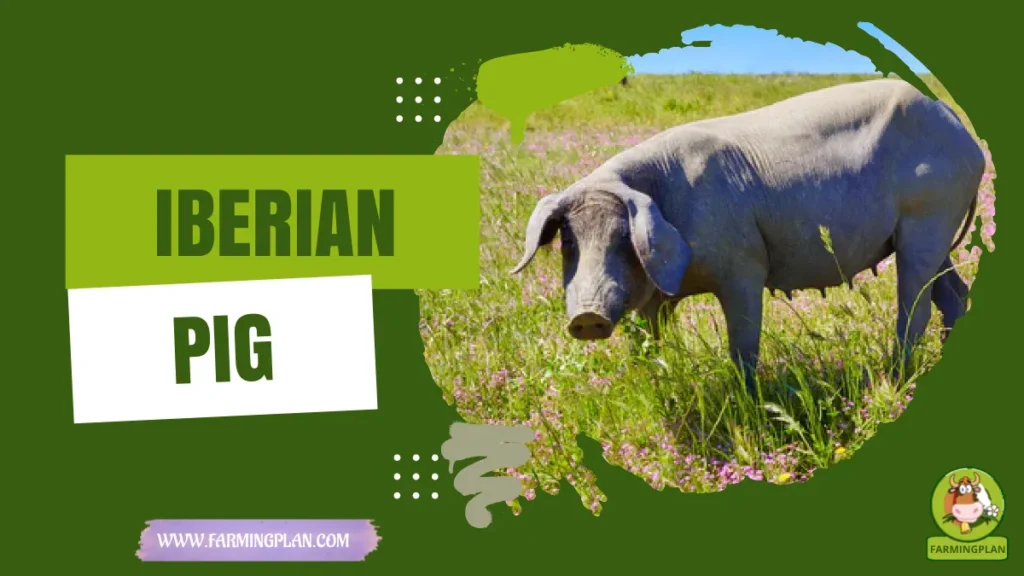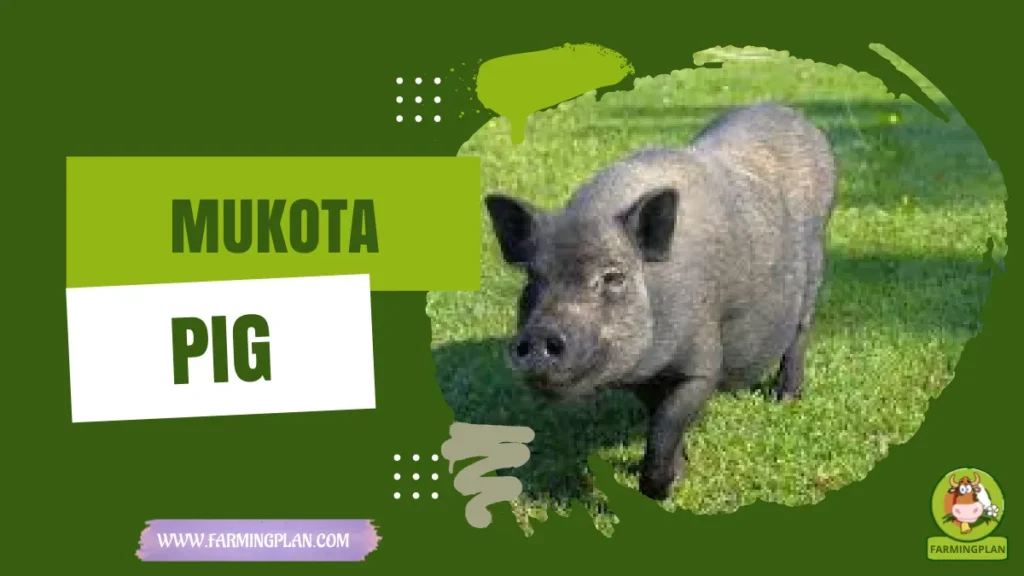When someone first told me about the Iberian Pig, I assumed it was just another hog breed. Oh, how wrong I was. This animal is a whole experience wrapped in a thick black coat and a heritage that runs deeper than the Mediterranean soil. Whether you’re a curious pet owner, an aspiring breeder, or a seasoned farmer, this Spanish native is full of charm, culinary value, and surprises. In this guide, I’ll walk you through everything I’ve learned raising and researching this breed, from its ancient roots to modern menu appearances in hotspots like The Iberian Pig Atlanta and Nashville. Let’s dive into why this hog is hogging the spotlight!

History & Origin of Iberian Pig
The Iberian Pig has been around for thousands of years, tracing its ancestry back to wild boars that roamed the Iberian Peninsula. This includes areas in Spain and Portugal, where the breed thrived in the Mediterranean ecosystem.
What makes this breed unique isn’t just its ancient lineage, but how it evolved in harmony with oak forests, grazing on acorns and herbs. This natural lifestyle influenced its legendary meat quality, especially Jamón Ibérico. Through the centuries, traditional farmers perfected the breeding and rearing methods, turning this pig into a national treasure. Spain even implemented strict regulations to protect the breed’s purity and culinary reputation. As someone who values breed preservation, I deeply appreciate the culture surrounding this animal.
Read More: Bentham Black Pig: Unique Breed for Your Farm
Characteristics of Iberian Pig
The Black Iberian Pig stands out with its dark color, long snout, and slender legs. Unlike typical pink pigs, their dark coat helps them thrive in hot Mediterranean climates.
They weigh anywhere from 150 to 400 pounds, depending on diet and purpose. They develop a marbled fat layer, which gives their meat that famous melt-in-your-mouth texture. If you’re ever dining in an Iberian Pig restaurant, you’re tasting that fat-rich magic firsthand. Their hooves are black too, leading to the nickname “pata negra.” But don’t let the sleek build fool you—these pigs are hardy, active foragers that need space and time to mature.
Read More: French Landrace Pig: Benefits Every Smart Breeder
Nature & Temperament of Iberian Pig
The Iberian Pig isn’t just about looks and meat. They’re gentle, social animals that thrive in groups. I’ve found them surprisingly intelligent, easily recognizing patterns, feeding schedules, and even familiar faces.
Unlike some commercial pigs that get stressed easily, these guys are relaxed and laid-back—almost like Mediterranean farmers themselves! Their calm temperament makes them suitable for small farms and pasture-based systems. If raised as a pet (yes, some do!), they need companionship and space to root.
Read More: British Saddleback Pig: Classic Bacon Breed
Food & Diet of Iberian Pig
Feeding an Iberian Pig is an art. Traditionally, these pigs graze freely and feast on acorns, grasses, and herbs during the “montanera” season. That’s the secret behind the unique flavor of Iberian Pig meat.
If you’re not in Spain with fields of oak trees, no worries. You can mimic this diet with a mix of grains, nuts, and natural forage. Avoid processed feeds or sugary foods—they can compromise both health and meat quality. I always say, “What you feed grows your flavor.” Freshwater, high-fiber supplements, and pasture time are the keys to success here.
Usage & Purpose of Iberian Pig
This pig does it all. While it can make a friendly farm companion, its real fame comes from its culinary value. Iberian Pig meat, particularly the cured Jamón Ibérico, is celebrated in restaurants across the globe, including popular spots like The Iberian Pig in Atlanta and Nashville.
Beyond meat, their fat renders beautifully for gourmet dishes. Some chefs build entire menus around it. They also play a role in cultural and ecological preservation, helping maintain traditional farming landscapes. Farmers use them for sustainable grazing, enhancing soil health and forest regeneration. So whether you raise them for food or conservation, they give back in spades, inspiring a sense of environmental stewardship.
Raise An Iberian Pig, And You’re Not Just Farming—You’re Crafting A Legacy Of Flavor, History, And Heart.
Special Features: What Sets Iberian Pigs Apart
You’ll hear folks talk about Black Iberian Pig characteristics, but it’s the unique traits that really shine:
- Marbled Fat: Fat integrates within the muscle, not around it, making the meat tender and flavorful.
- Acorn-Fed Meat: A rich, nutty flavor profile, unlike any other pork.
- Slow Growth: They take time to mature, which enhances meat quality.
- Ecological Farming: They thrive in free-range, sustainable systems.
Oh, and did I mention they’re one of the few pig breeds legally protected for their meat identity in Europe? That’s legacy-level respect.
Health Issues & Prevention: Keeping Your Pig Happy
Like any breed, the Iberian Pig has its vulnerabilities. The biggest concern these days is African Swine Fever (ASF). It’s not in every region, but always be alert. They’re also prone to weight-related joint issues if overfed without enough space to move. Parasites, respiratory issues, and vitamin deficiencies can pop up too.
To keep them healthy:
- Stick to clean, shaded shelters.
- Rotate pastures.
- Regular vet check-ups.
- Natural deworming methods.
As with any animal, prevention beats treatment. I always say, “A healthy pig equals a happy farm.” This emphasis on prevention will make the audience feel responsible and caring towards their pigs.
Step-by-Step Care Guide: Raising Iberian Pigs Like A Pro
If you’re thinking about raising these pigs, you’re in for a rewarding experience. Whether for farming or the homestead life, here’s a guide that’s worked wonders for me.
Step 1: Plan Your Space & Shelter
Start with a solid plan. Iberian Pigs are roamers. They need at least half an acre per pig if you’re going free-range.
Build a sturdy shelter with plenty of shade and protection from rain. These pigs don’t love wet feet. Bedding can be straw or wood shavings, replaced weekly. Add fencing that’s at least 3 feet high—they’re curious but not escape artists.
Step 2: Choose Quality Stock
Source your piglets or breeding pair from a reputable breeder. Look for signs of health: clear eyes, good weight, and active behavior. Ask questions about their diet, vaccinations, and origin. A healthy start means fewer problems down the road. Try getting pigs certified for Iberian lineage if you plan to produce gourmet-quality meat.
Step 3: Set The Right Diet
Stick to a high-fiber, acorn-rich diet if possible. If you can’t get acorns, use chestnuts, barley, and legumes. Rotate pasture areas so they get fresh forage. Include mineral blocks and constant clean water access. Supplement with feed grains when needed, especially in colder months.
Step 4: Keep Health A Priority
Schedule deworming every 2-3 months, and keep vaccinations up to date. Watch for coughing, limping, or changes in appetite. Quarantine new pigs before introducing them to the group. Install proper drainage in the pen to prevent hoof rot and parasites. Keep your local vet on speed dial—they’re worth their weight in gold.
Step 5: Manage Breeding & Growth
If you plan to breed, give your sow proper rest between litters. Iberian Pigs typically have 4-8 piglets per litter. Monitor growth rates, especially during the final fattening phase before processing. Most pigs reach market weight in 12-18 months.
Expert Tips & Best Practices: Pro Moves For Pig Perfection
- Give Them Company: These pigs love social groups.
- Rotate Pastures: Prevents overgrazing and parasite issues.
- Track Diet: Balance grains and forage to avoid excess fat.
- Slow Raise, Better Taste: Don’t rush the fattening phase.
- Use Natural Wormers: Garlic, pumpkin seeds, and DE can help.
- Build Community: Join pig farming groups or visit Iberian Pig restaurants for inspiration.
Tip: Want Flavor-Packed Pork? Let Your Pig Live Its Best Life In The Sun, With Space To Roam And Acorns To Snack On.
FAQ
What makes Iberian Pig meat so special?
It’s the fat marbling and acorn-rich diet. The flavor is rich, nutty, and tender—a true delicacy.
Where can I try Iberian Pig meat in the U.S.?
You can taste it at The Iberian Pig restaurants in Atlanta and Nashville. They serve authentic Spanish tapas featuring Iberian pork.
How much does a Black Iberian Pig weigh?
Adults usually weigh between 150 to 400 pounds, depending on diet and care.
Is it legal to raise Iberian Pigs in the U.S.?
Yes, but you need to find licensed breeders. Importing pure Iberian lines can be tricky due to regulations.
How do I know if the meat is genuine Iberian?
Look for labels like Jamón Ibérico de Bellota and verify with your supplier or restaurant.
Conclusion
Raising the Iberian Pig is more than just a farming choice—it’s a lifestyle. These pigs bring history, flavor, and ecological harmony to any setup. Whether you’re in it for world-class meat, sustainable farming, or just love unique breeds, the Iberian Pig is a true gem. I’ve enjoyed every moment with mine, from their playful rooting to the satisfaction of a well-raised hog. Curious to start your own journey or just love reading about heritage breeds? Share this with a fellow pig lover, leave a comment, or drop me a question—I’d love to hear from you!


